
The Grand Canal is a channel in Venice, Italy. It forms one of the major water-traffic corridors in the city.
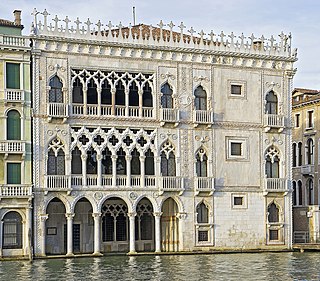
The Ca' d'Oro or Palazzo Santa Sofia is a palace on the Grand Canal in Venice, northern Italy. One of the older palaces in the city, its name means "golden house" due to the gilt and polychrome external decorations which once adorned its walls. Since 1927, it has been used as a museum, as the Galleria Giorgio Franchetti.

The Procuratie are three connected buildings along the perimeter of Saint Mark's Square in Venice, Italy. Two of the buildings, the Procuratie Vecchie and the Procuratie Nuove, were constructed by the procurators of Saint Mark, the second-highest dignitaries in the government of the Republic of Venice, who were charged with administering the treasury of the Church of Saint Mark as well as the financial affairs of state wards and trust funds established on behalf of religious and charitable institutions.

The Scuola Grande di San Marco is a building in Venice, Italy, designed by the well-known Venetian architects Pietro Lombardo, Mauro Codussi, and Bartolomeo Bon. It was originally the home to one of the Scuole Grandi of Venice, or six major confraternities, but is now the city's hospital. It faces the Campo Santi Giovanni e Paolo, one of the largest squares in the city.

Mauro Codussi (1440–1504) was an Italian architect of the early-Renaissance, active mostly in Venice. The name is also rendered as Coducci. He was one of the first to bring the classical style of the early renaissance to Venice to replace the prevalent Gothic style.

Santa Maria Formosa, formally The Church of the Purification of Mary, is a church in Venice, northern Italy. It was erected in 1492 under the design by Renaissance architect Mauro Codussi. It lies on the site of a previous church dating from the 7th century, which, according to tradition, was one of the eight founded by San Magno, bishop of Oderzo. The name "formosa" relates to an alleged appearance of the Holy Virgin disguised as a voluptuous woman1.

Castello is the largest of the six sestieri of Venice, Italy.
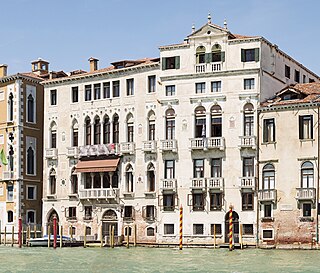
The Palazzi Barbaro—also known as Palazzo Barbaro, Ca' Barbaro, and Palazzo Barbaro-Curtis—are a pair of adjoining palaces, in the San Marco district of Venice, northern Italy. They were formerly one of the homes of the patrician Barbaro family. The Palazzi are located on the Grand Canal of Venice, next to the Palazzo Cavalli-Franchetti and not far from the Ponte dell'Accademia. The buildings are also known as the Palazzo Barbaro-Curtis. It is one of the least altered of the Gothic palaces of Venice.
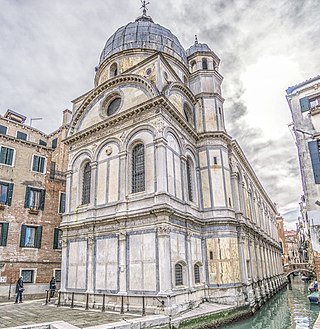
Venetian Renaissance architecture began rather later than in Florence, not really before the 1480s, and throughout the period mostly relied on architects imported from elsewhere in Italy. The city was very rich during the period, and prone to fires, so there was a large amount of building going on most of the time, and at least the facades of Venetian buildings were often particularly luxuriantly ornamented.

The Palazzo da Mula is a Venetian villa on the island of Murano in the Venice Lagoon, on the sub-island of San Pietro Martire, on the south bank of the Canale degli Angeli, near the Ponte Vivarini bridge that leads to the main island of Murano, San Donato. The palazzo is the last remnant of Venetian villas built in Murano in the 15th and 16th centuries. Originally there were only a few villas with extensive gardens on the island, but today the Palazzo da Mula is integrated into a row of houses. The 16th and 17th-century structure and details of the palazzo can be traced back to the Da Mula family, who had acquired the palazzo from the aristocratic Diedo family in 1621. The Da Mulas resided in this palazzo until 1712, when it was rented to the aristocratic family of Giacomo Fontanella, a member of the new aristocracy of glass masters, for a sum of 110 ducats. The property then passed to Giacomo's son, Zuanne Fontanella.

The Palazzo Giustinian Persico is an early-Renaissance-style palace located at the corner with the Rio di San Tomà, near Palazzo Tiepolo and across the canal from Palazzi Mocenigo on the Grand Canal, in the Sestiere of San Polo, Venice, Italy.

Palazzo Priuli Bon is a Gothic-style palace on the Canal Grande, located between the Palazzo Duodo and the Campo of San Stae, in the sestiere of Santa Croce, in Venice, Italy.
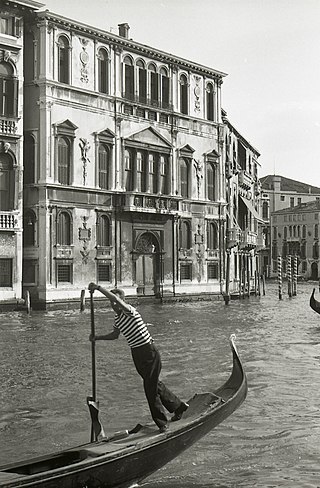
The Palazzo Contarini delle Figure is a Renaissance-style palace located between the Palazzo Mocenigo Ca' Vecchia and Palazzo Erizzo Nani Mocenigo, across the Grand Canal from the Palazzo Civran Grimani in the sestiere di San Marco in the city of Venice, Italy.
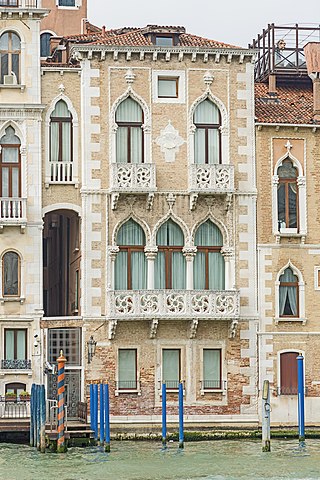
Palazzo Contarini Fasan is a small Gothic palace in Venice, Italy, located in the San Marco district and overlooking the Grand Canal. The palazzo is also called the House of Desdemona.

Palazzo Correr Contarini Zorzi is a Renaissance palace in Venice, Italy, overlooking the Grand Canal and locating in the Cannaregio district between Palazzo Querini Papozze and Palazzo Gritti. The palazzo is also known as Ca' dei Cuori, a family whose wrought iron coats of arms is present on the façade.

Palazzo Cavriani is an aristocratic palace with gardens located in Mantua, Italy. The palace is also sometimes referred to as the Palazzo Gonzaga-Spolverini, but the palace belonging to those families was either razed or subsumed into the present neoclassical structure and garden.
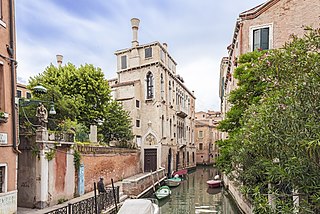
Palazzo Soranzo Van Axel is a Gothic palace in Venice, Italy located in the Cannaregio district. The palace locates at the intersection of the Rio de la Panada and the Rio de Ca' Widmann.
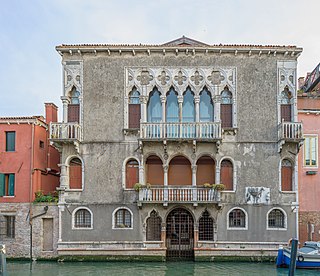
Palazzo Mastelli del Cammello is a Gothic palace in Venice, Italy. It is located in Cannaregio district, on the Campo dei Mori and the Rio Madonna dell'Orto.

Palazzo Corner Contarini dei Cavalli is a palace in Venice, located in the San Marco district, overlooking the left side of the Grand Canal, between the Rio di San Luca and Palazzo Grimani di San Luca on one side and Palazzo Tron and Palazzetto Tron Memmo on the other. The opposite structure is the Palazzo Papadopoli.

Palazzo Zorzi Bon is a historic palace in Venice located in the Castello district. The building inspired the book The Zorzi Affair by the American writer Sylva Prince.























